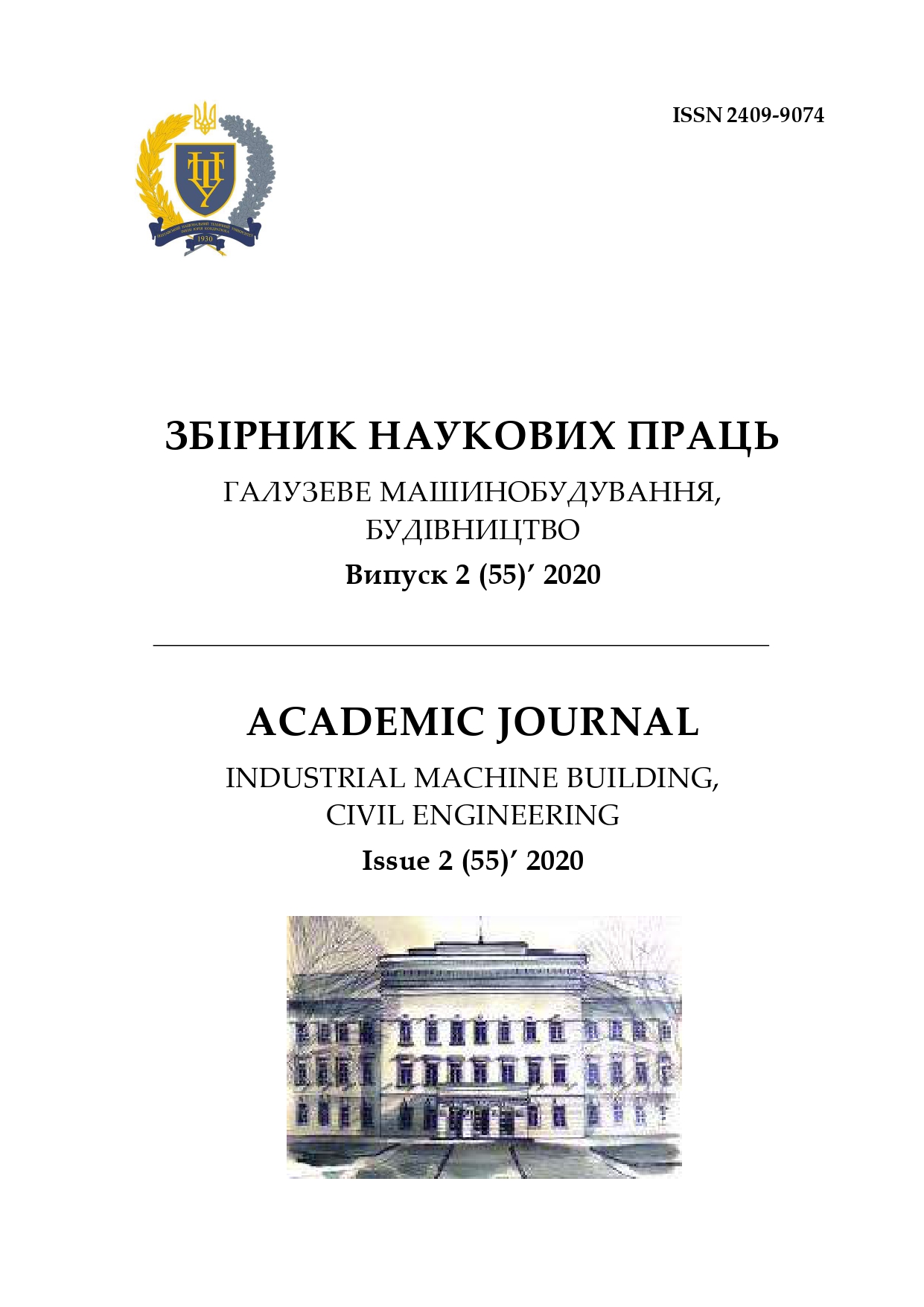Probabilistic basis development of standardization of snow loads on building structures
DOI:
https://doi.org/10.26906/znp.2020.55.2335Keywords:
snow observations, snow load, territorial zoning, normative load, design loadAbstract
Ensuring the reliability and safety of buildings and structures largely depends on a proper understanding of nature and quantitative description and rationing of loads on building structures, including snow loads. Analysis of the evolution of domestic snow load codes together with their statistical substantiation is an urgent task. The article contains a systematic review of codes and publications on the problem of snow load over the 80-year period from the 40s of the twentieth century to the present. The main attention is paid to the tendencies analysis of designing codes development concerning changes of territorial zoning and design coefficients, the appointment of normative and design values of snow load, and involvement in it of experimental statistical data. There is a high scientific level of domestic code DBN B.1.2-2006 "Loads and effects", which have a modern probabilistic basis and are associated with the codes of Eurocode. Scientific results that can be included in subsequent editions of snow load standards are highlighted.
References
Nikolaev A.F. (1935). Snow loads on buildings. Builder, 8 (10), 18-26
Streletsky N.S. (1938). On the calculation of the safety margins of structures. Proceedings of the Moscow Civil Engineering Institute, 1, 4-32
Streletsky NS (1947). Fundamentals of statistical accounting for the safety factor. Moscow: Stroyizdat
Abovskiy V.P., Veksman A.M., Volkov V.M. & Maty¬sek G.V. (1954). Unresolved issues in the design of industrial buildings with heavy snowfall. Construction industry, 11, 30-31
Kan-Khut E.D. (1954). Clarification of snow loads. Construction industry, 12, 22-23
Korablinov A.M. & Krause L.S. (1957). Lessons from accidents of two coatings. Construction industry, 7, 18-21
Goldenblat I.I., Korenev V.G. & Sizov A.M. (1956). About snow loads according to building codes. Construction industry, 6, 25-28
Otstavnov V.A. (1960). About snow loads on building coverings. Industrial construction, 1, 58-61
Klepikov L.V. & Otstavnov V.A. (1962). Determination of loads in the calculation of building structures. Structural mechanics and calculation of structures, 5, 39-45
Bessonov V.S. (1964). Experimental work to prevent excessive accumulation of snow on the roofs of industrial buildings in areas with strong winds. Proceedings of Universities. Building and architecture, 11, 60-63
Khromets Yu.N. & Solodovnikov R.A. (1971). Methods for dealing with excess snow deposits on building surfaces. Industrial construction, 5, 28-30
Driving A.Ya. (1973). On the coefficient of overloading the snow load on light coatings. Loads and reliability of building structures: Tr. TsNIISK, 21, 53-57
Otstavnov V.A. & Rosenberg L.S. (1966). Possibilities for reducing snow loads on flat surfaces. Industrial construction, 12, 28-32
Bat A.A. (1977). Comments to the chapter SNiP II-6-74 “Loads and Impacts”. Industrial construction, 5, 42-44
Zhukova N.K. (1979). Results of field observations of snow loads on spatial structures of pavements. Proceedings of Universities. Building and architecture, 9, 40-46
Neverov I.A., Zakharchenko S.M. & Klimenko V.Z. (1984). Snow loads on the lancet arched cover. Industrial construction, 7, 15-17
Koshutin B.N. & Strokatov B.P. (1984). On the possibility of reducing the design loads on flat surfaces of industrial buildings with skylights. Industrial construction, 5, 33-34
Kinash R.I. & Burnaev O.M. (1997). Snow load in Ukraine. Lviv: Publishing house of scientific and technical literature
Pashinsky V.A. (1999). Atmospheric loads on building structures for the territory of Ukraine Kyiv: UkrNDIProektstalkonstruktsiya
Gordeev V.N., Lantukh-Lyashchenko A.I., Pashin-sky V.A., Perelmuter A.V. & Pichugin S.F. Ed. A.V. Perelmuter. (2008). Loads and Loaings on buildings and structures. Moscow: Publishing house ASV
Pichugin S.F. & Makhinko A.V. (2012). Snow and ice loads on building structures. Poltava: OOO ASMI
Nazarov Yu.P., Lebedeva I.V. & Popov N.A. (2006). Regional regulation of snow loads in Russia. Structural mechanics and calculation of structures, 3, 71-77
Otstavnov V.A. & Lebedeva I.V. (2004). The New Map of Ground Snow Loads for Russian Building Code. Proc. of V International Conference on Snow Engineering. Davos, Switzerland, 157-160
Malyi V.I. (2011). On the special attitude to snow load in Russian codes. Industrial and civil engineering, 8, 42-45
Pichugin S.F. (2016). Calculation of reliability of building structures. Poltava: TOV ASMI
Ledovskoy I.V. (2005). Analysis of the random process of snow accumulation on the ground. Bulletin of Civil Engineers, 3 (4), 29-35
Pichugin S.F. (1995). Probabilistic representation of loads on building structures. Proceedings of Universities. Building, 4, 12-18
Pichugin S.F. & Pashinsky V.A. (1999). On the possibility of representing the snow load in the form of a stationary random process. Questions of the reliability of reinforced concrete structures, Kuibyshev, 26-29
Pichugin S.F. (2000). Probabilistic Description of Ground Snow Loads for Ukraine. Snow Engineering. Recent Advanced and Developments. Rotterdam: A.A.Balkema, 251-256
Pashinsky V.A. (1999). Quasi-constant design values of loads on building structures. Municipal services of cities: Scientific and technical collection, 18, 78-81
Kinash R.I. & Guk J.S. (2011). Zoning of the Transcarpathian region by the maximum height of snow cover. Modern constructions from metal and wood. Collection of scientific works, 3, 63-68
Pichugin S. & Dryzhyruk Y. (2010). Snow Load Investigation for Buildings of Different Heights. Recent Advances in Research on Environmental Effects on Buildings and People. Ed. by A. Flaga and T. Lipecki. PAWE, Cracow, Poland, 279-286
Pichugin S.F., Molka I.V. & Drizhiruk Yu.V. (2011). Influence of heat loss through roofs on the value of snow load. Collection of scientific works. Industrial Engineering, Construction, 2 (30), 113-117.
Pichugin S.F., & Popovich N.M. (2012). Probabilistic model of snowfall sequence for normalization of snow load on cold roofs. Resource-saving materials, structures, buildings and structures. Collection of scientific works, 24, 377-384.
Pichugin S.F., Dryzhyruk Yu.V., Popovich N.M. & Chernetska I.V. (2015). The features of snow loads on building roofs. Technical Transactions, 12. Civil Engineering, 2-B/2015, 441-449 https://doi.org/10.4467/2353737XCT.15.149.4186
Downloads
Published
How to Cite
Issue
Section
Published 2020-12-30




